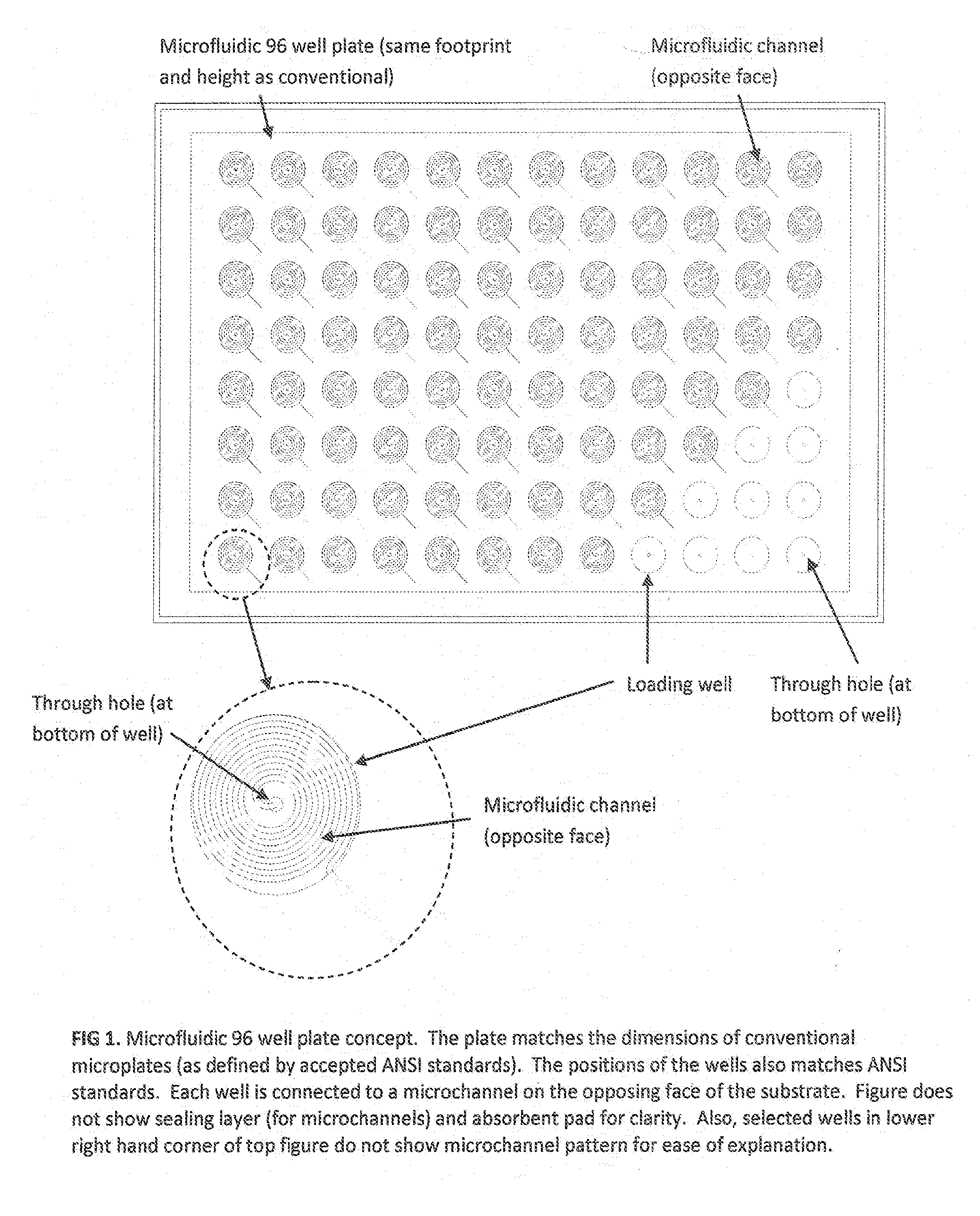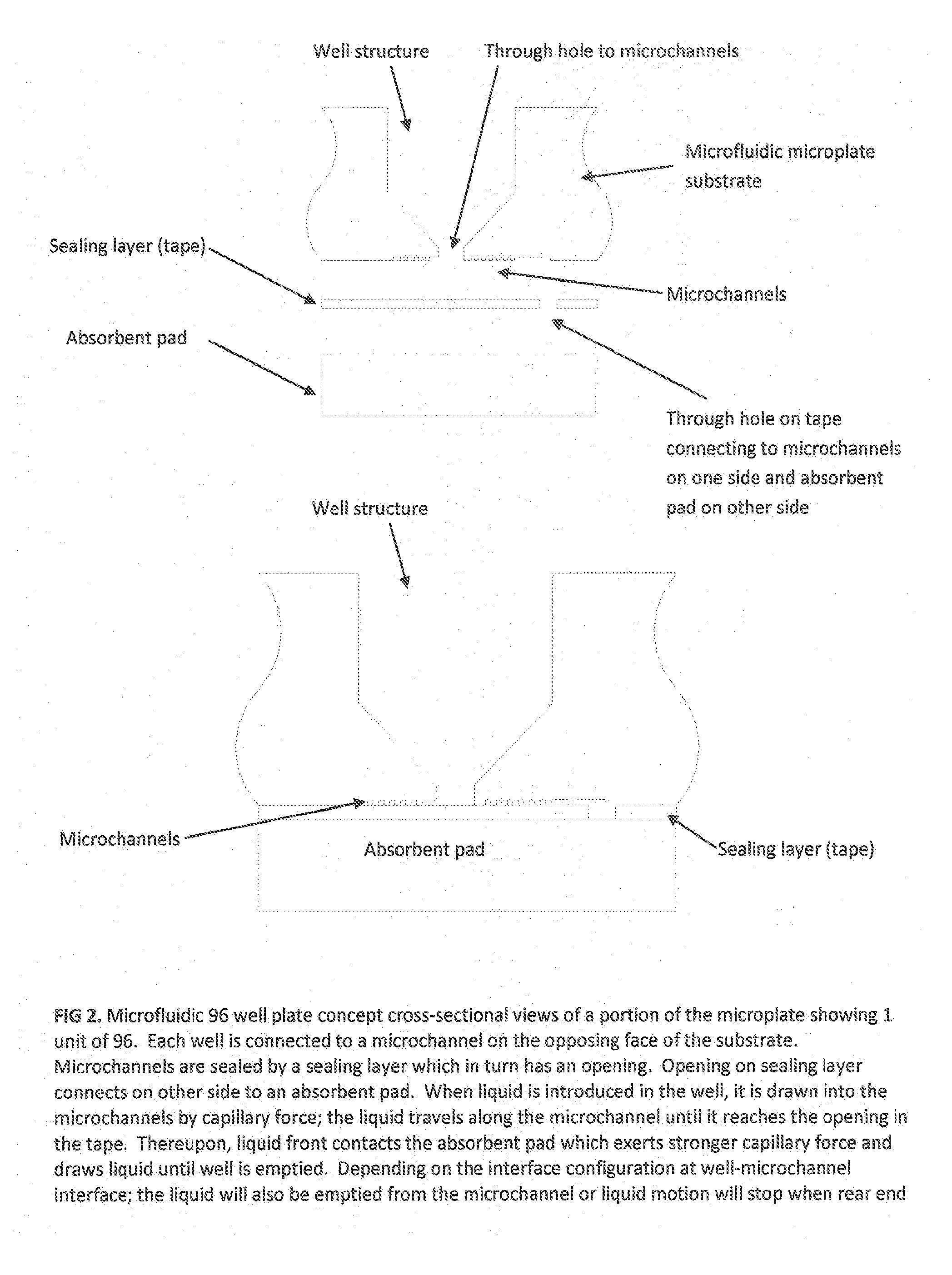Microfluidic assay platforms
a microfluidic assay and platform technology, applied in the field of microfluidic assays, can solve the problems of significant bottleneck, lack of standardized platforms, and still not completely resolved, and achieve the effect of convenient and reliabl
- Summary
- Abstract
- Description
- Claims
- Application Information
AI Technical Summary
Benefits of technology
Problems solved by technology
Method used
Image
Examples
Embodiment Construction
[0055]It is to be appreciated by those skilled in the art that modification or variation may be made to the preferred embodiments of the present invention, as described herein, without departing from the essential novelty of this present invention. All such modifications and variations are intended to be incorporated herein and are within the scope of this invention.
[0056]As referenced herein; μF96 or μf96 or the Optimiser™ refer to a 96 well microfluidic microplate wherein each well is connected to at least one microfluidic channel. Unless otherwise explicitly described, the microfluidic microplate shall be assumed to be made of 3 functional layers, namely the substrate layer (with the wells, through-hole structures and microchannels), the sealing tape layer, and an absorbent pad layer; wherein the “96” refers to a 96 well layout and similarly μf384 would refer to a 384 well layout and so forth. The term Optimiser™ is also used to describe the present invention and similarly, Optim...
PUM
| Property | Measurement | Unit |
|---|---|---|
| volume | aaaaa | aaaaa |
| thickness | aaaaa | aaaaa |
| radius | aaaaa | aaaaa |
Abstract
Description
Claims
Application Information
 Login to View More
Login to View More - R&D
- Intellectual Property
- Life Sciences
- Materials
- Tech Scout
- Unparalleled Data Quality
- Higher Quality Content
- 60% Fewer Hallucinations
Browse by: Latest US Patents, China's latest patents, Technical Efficacy Thesaurus, Application Domain, Technology Topic, Popular Technical Reports.
© 2025 PatSnap. All rights reserved.Legal|Privacy policy|Modern Slavery Act Transparency Statement|Sitemap|About US| Contact US: help@patsnap.com



